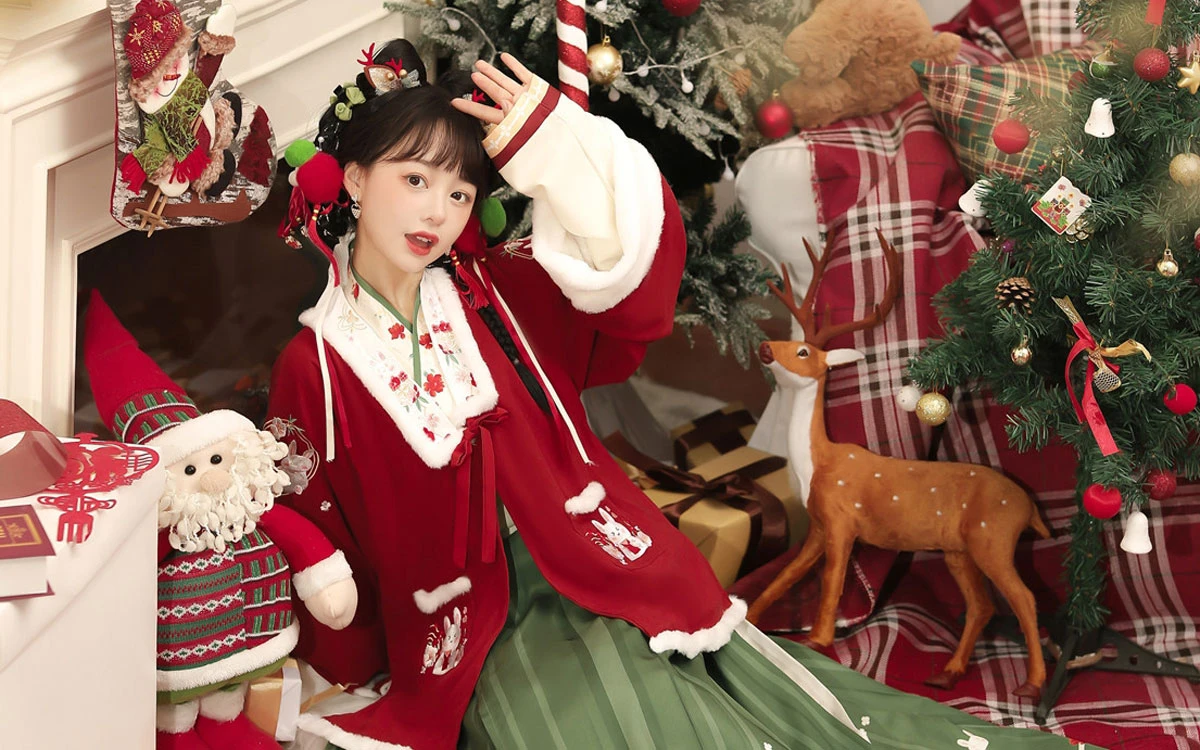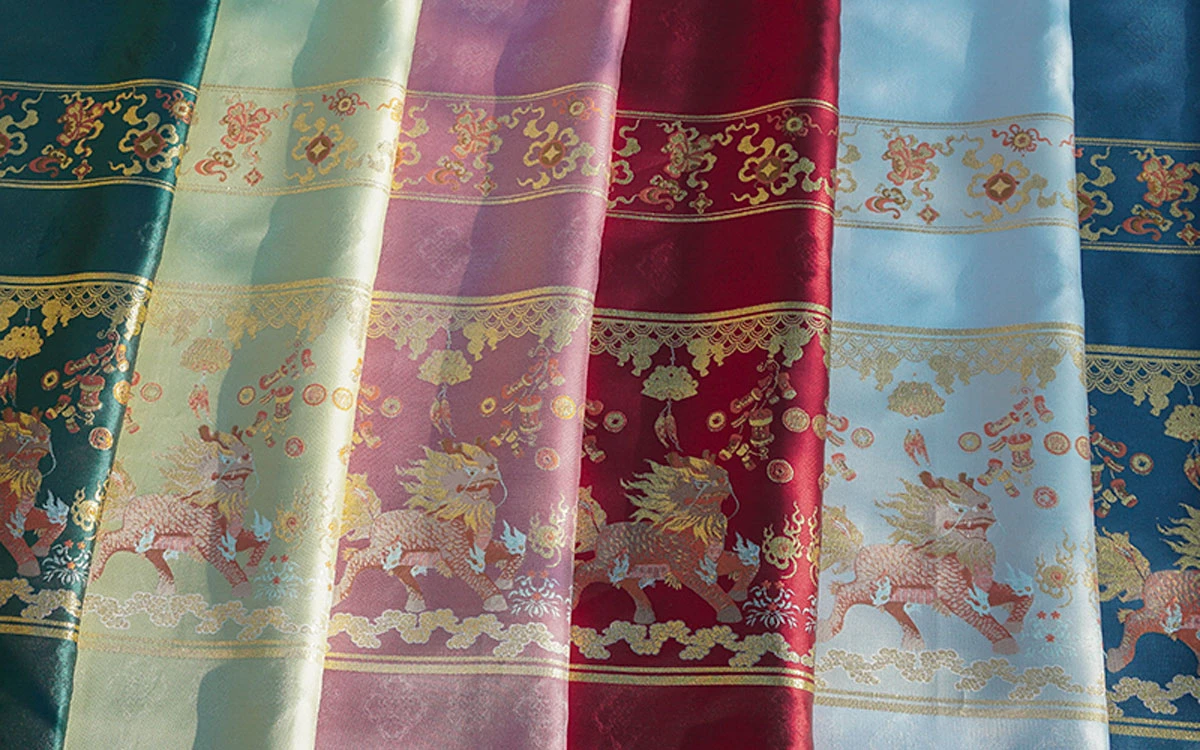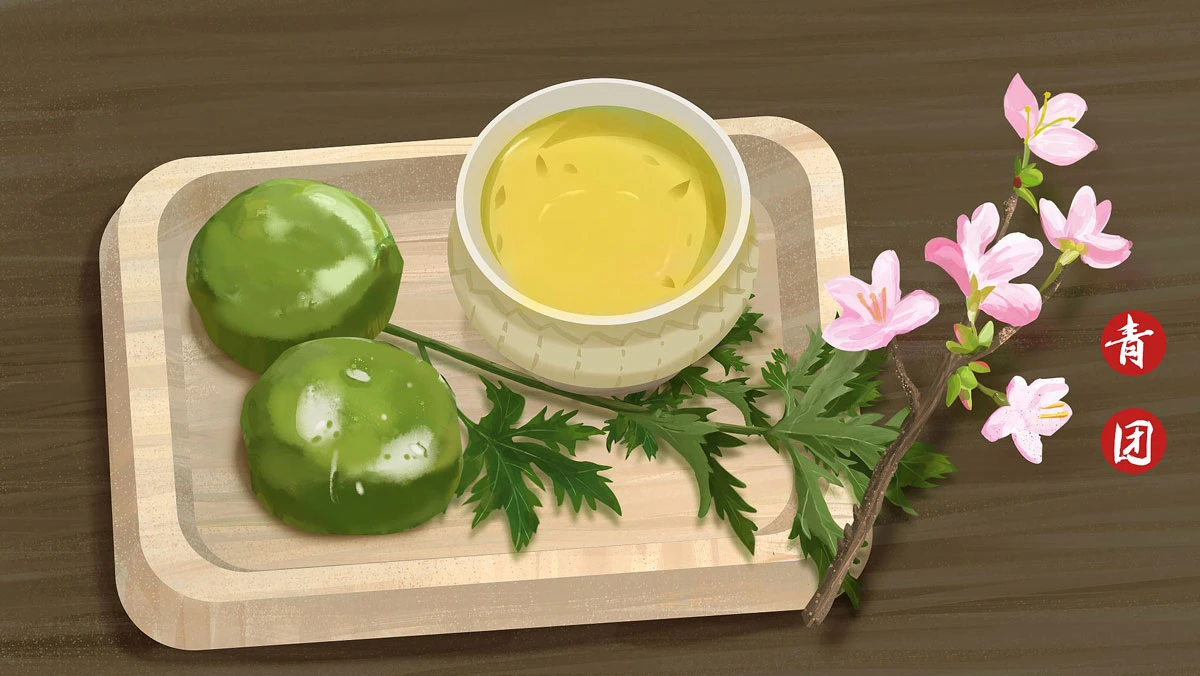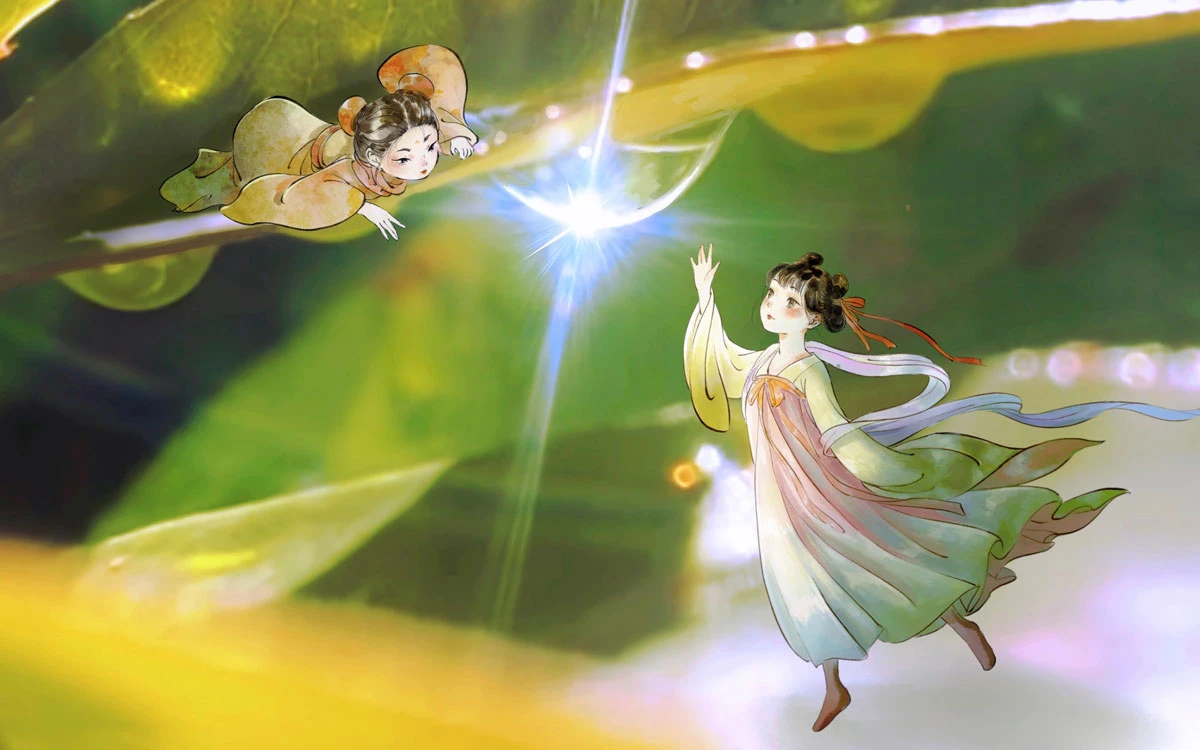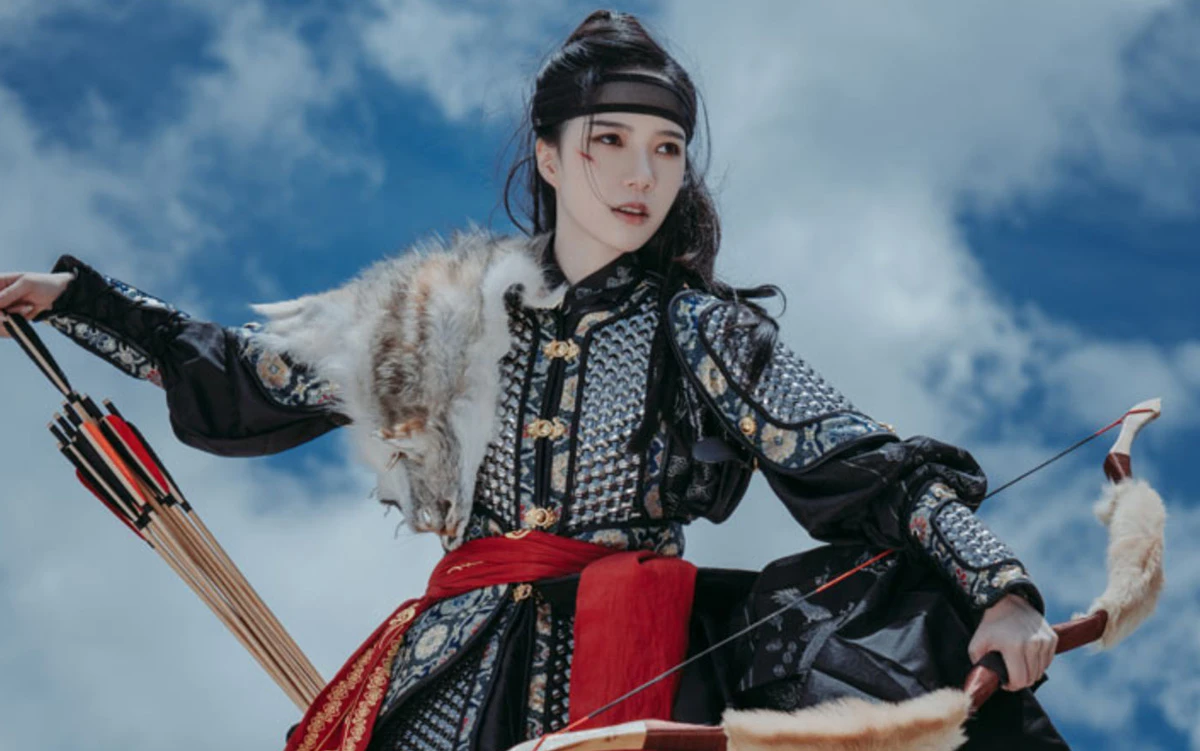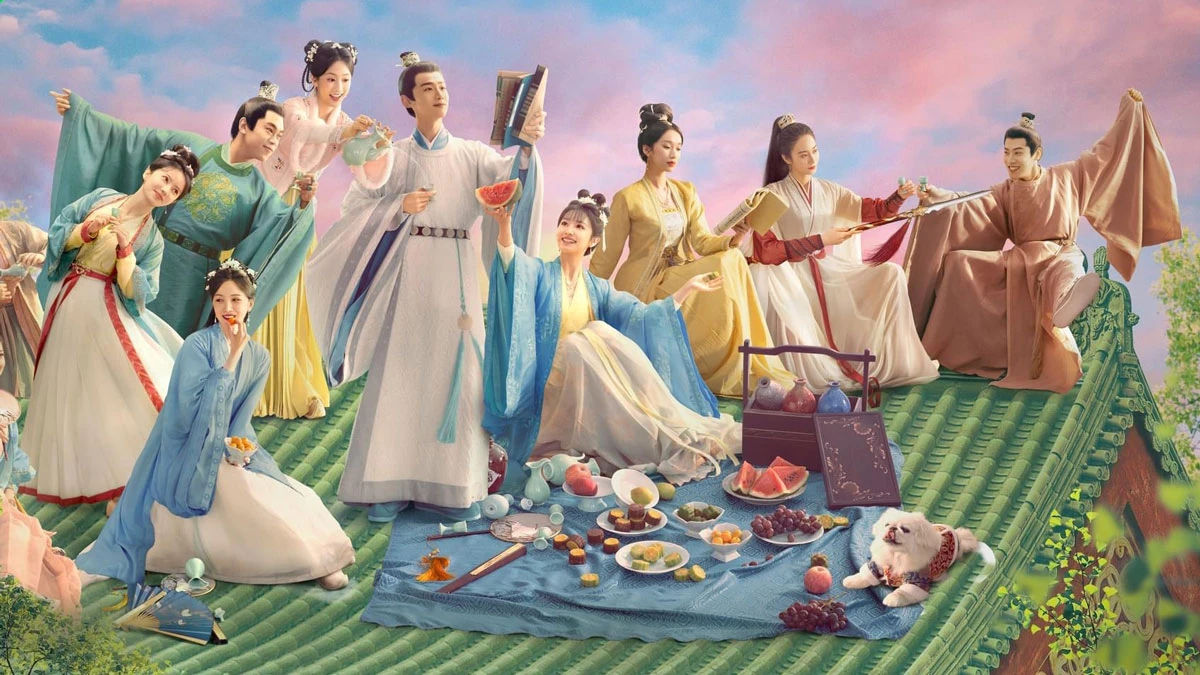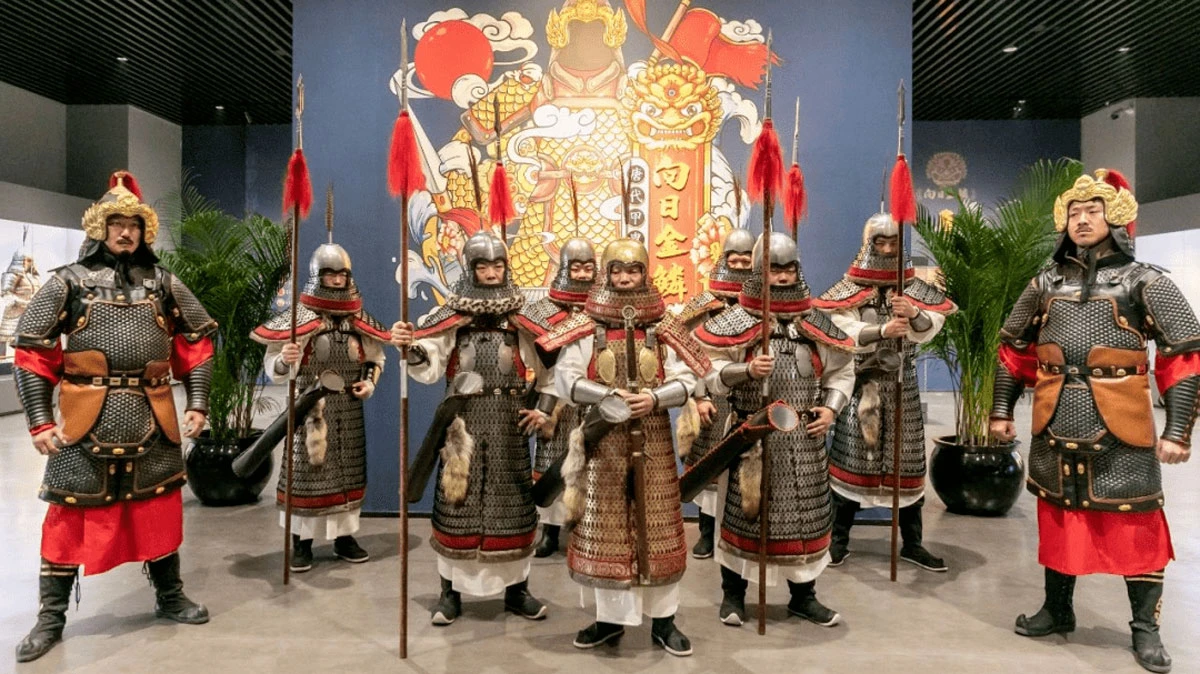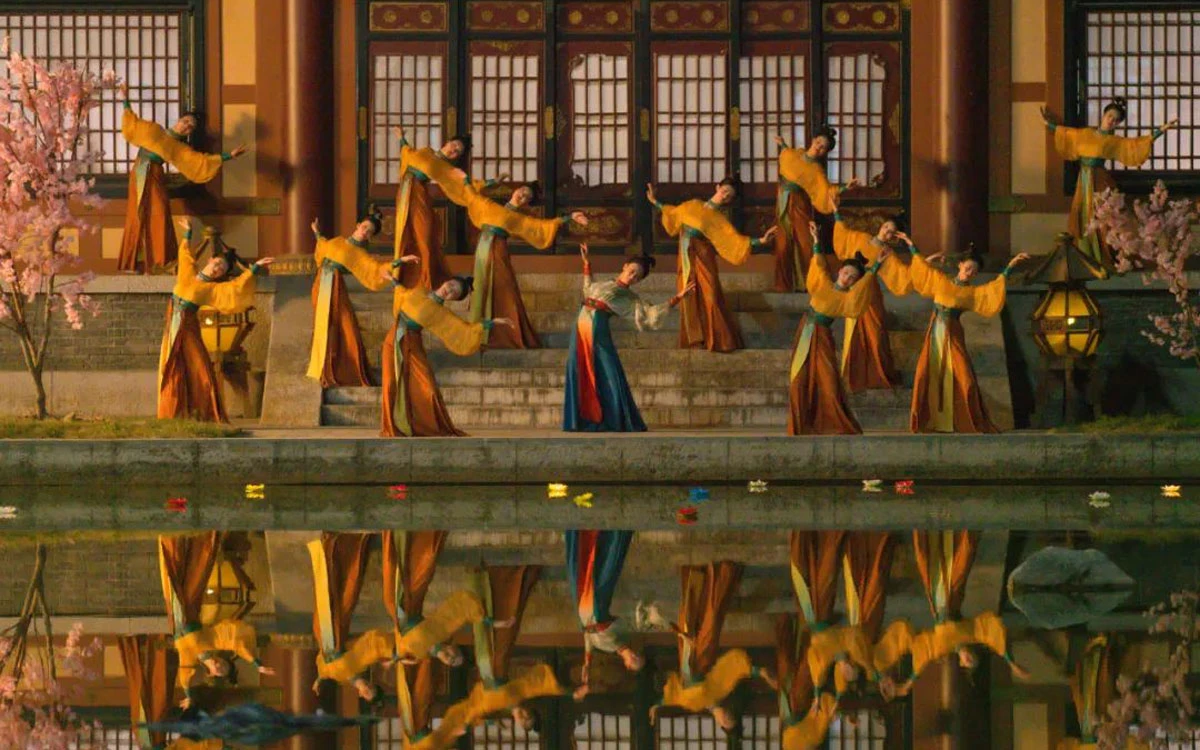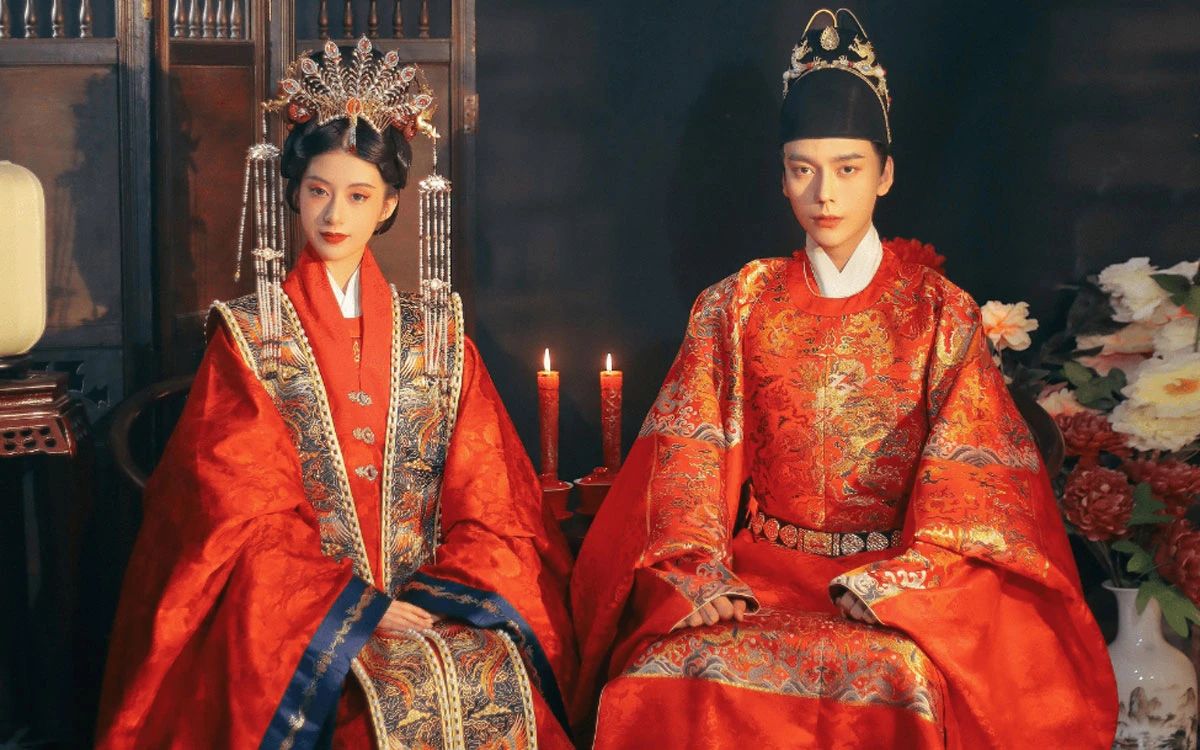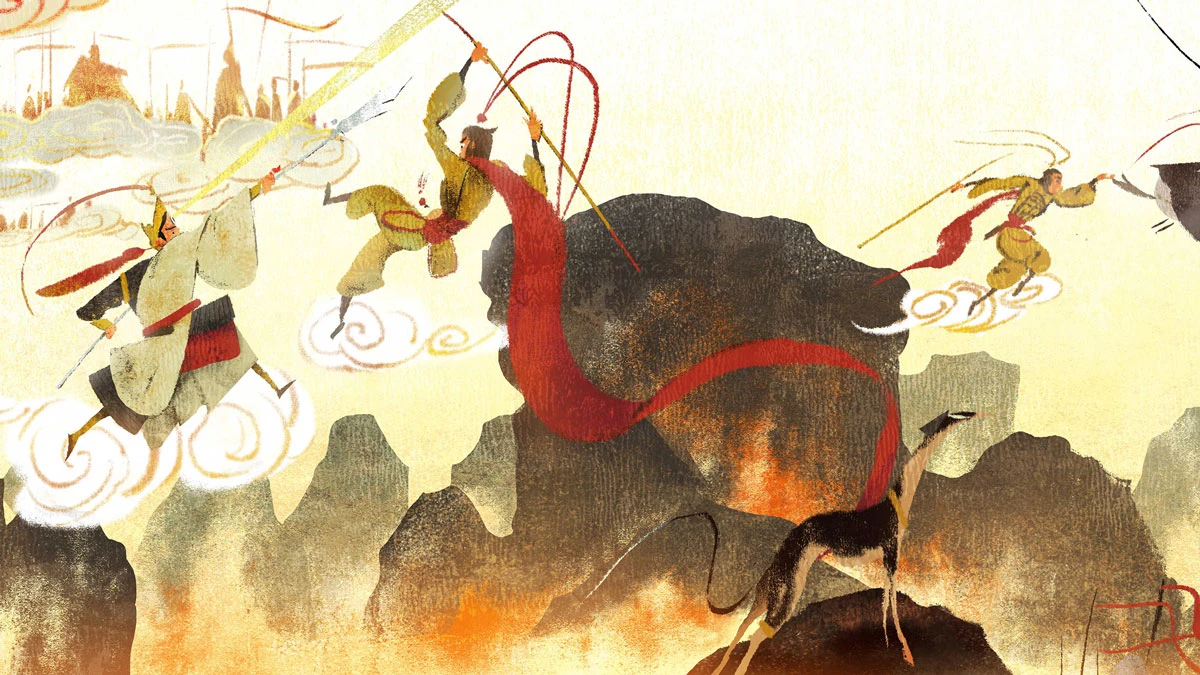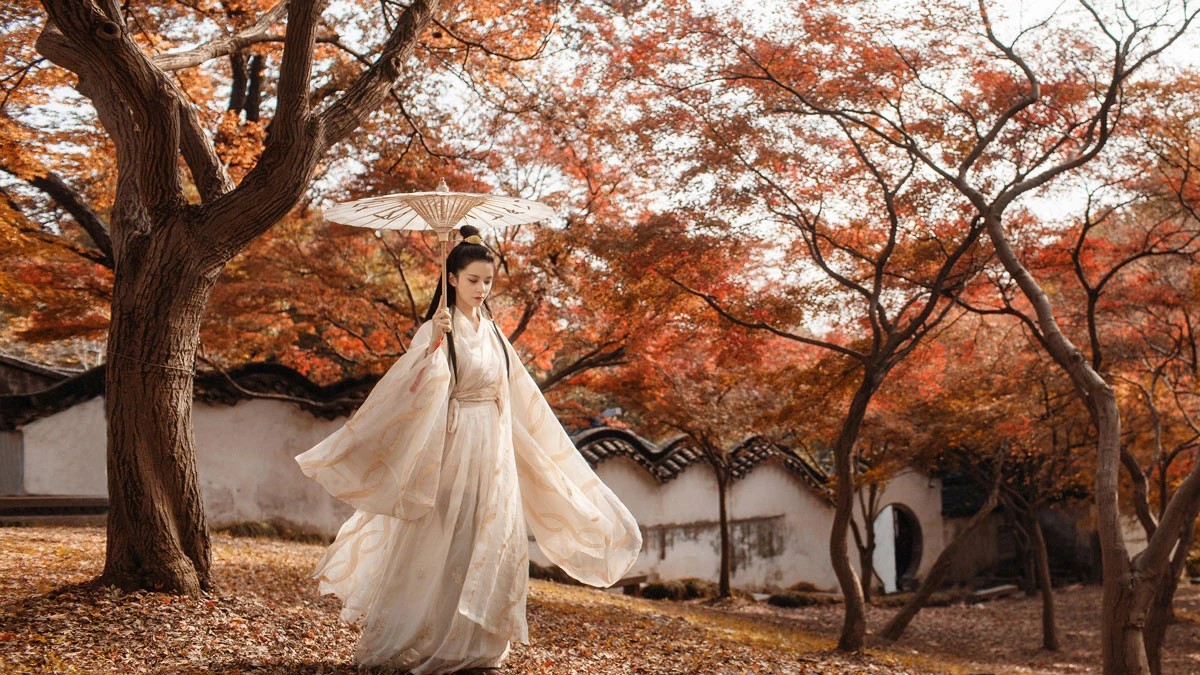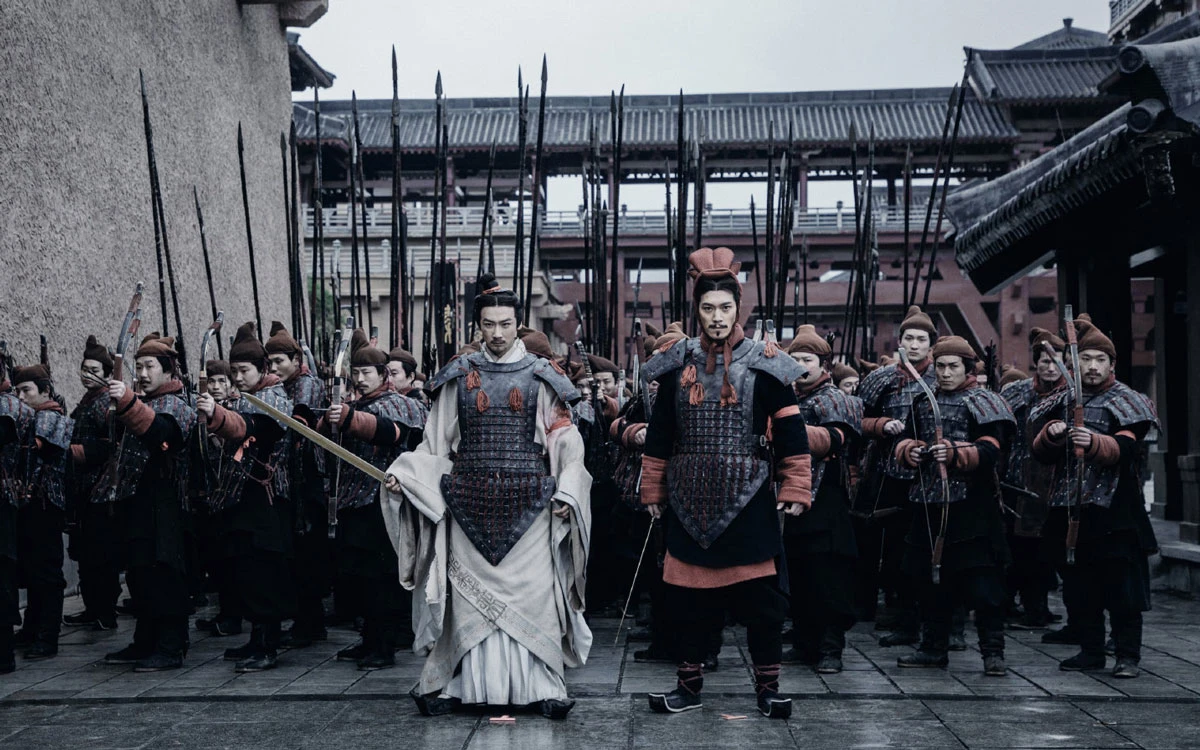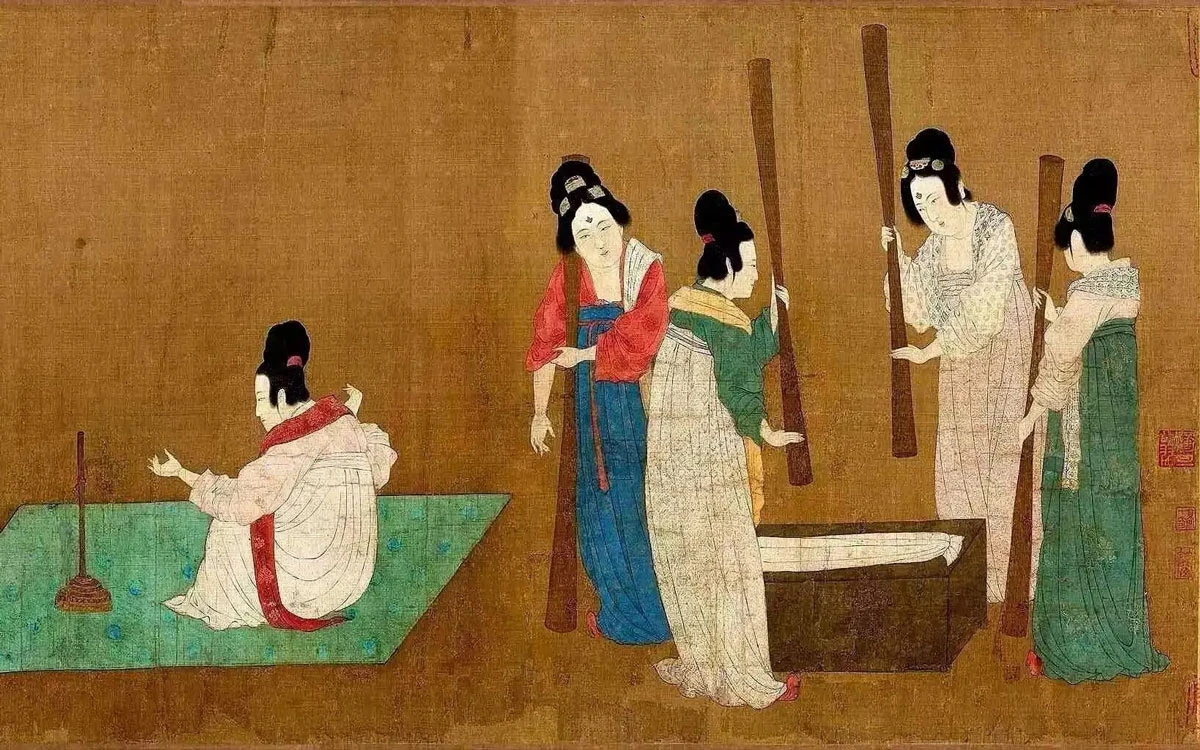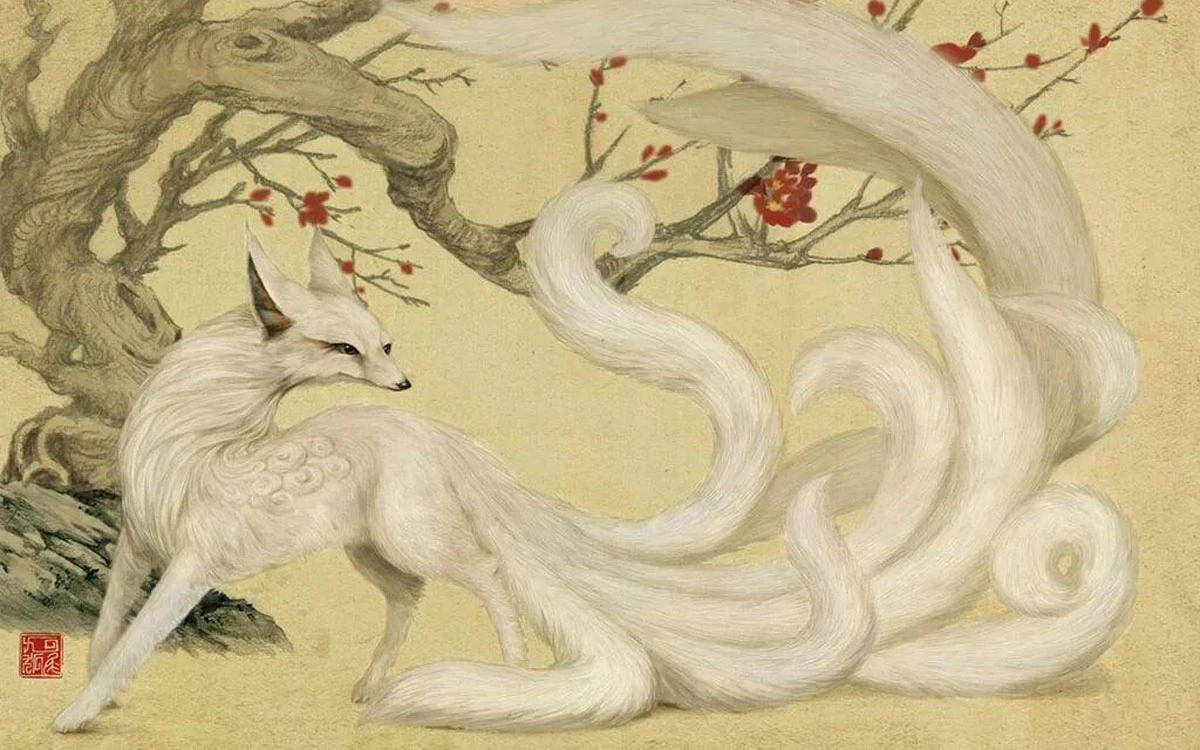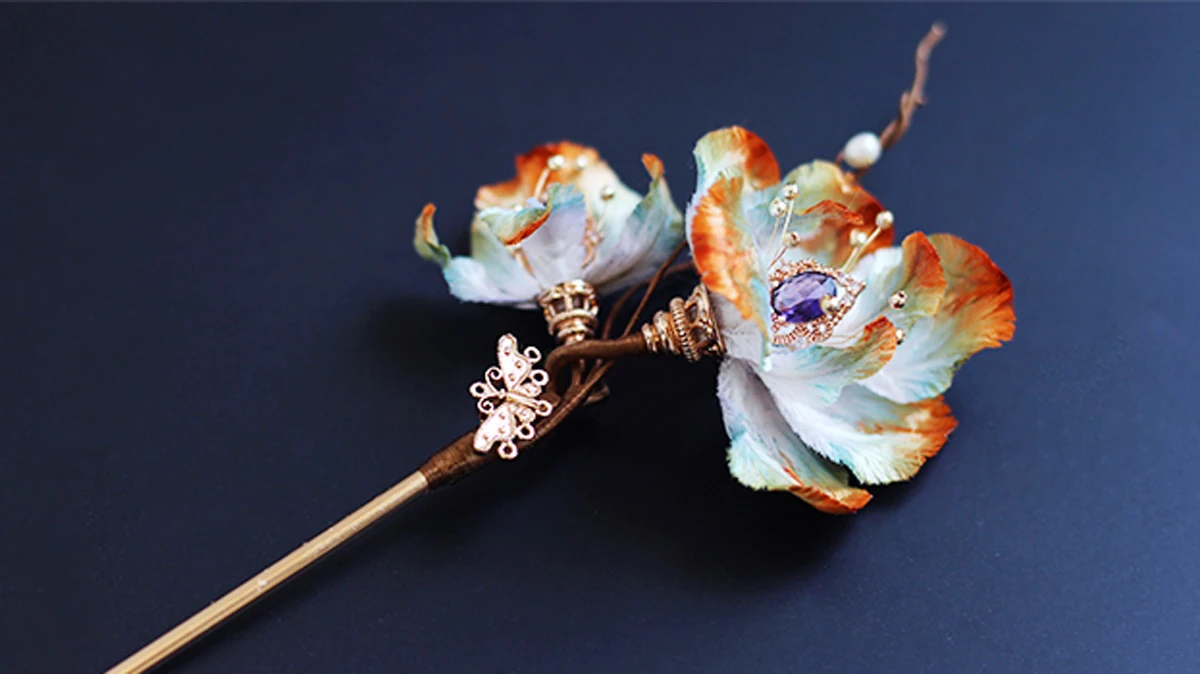Article
搜索结果:
-
Christmas Presents for Hanfu Lovers
Holliday season is upon us! Many of you may already be shopping for gifts. If you have hanfu lovers amongst your friends and relatives, or if you need to come up with a list of your own to give ideas to your relatives, here are a few inspirations. My choices went to objects that are: versatile, so you can have a few of the item and use them interchangeably hard to make for yourself, so even if the person makes hanfu for themselves, they would be happy to have one ready-made hard to find in stores but available online useful, no matter how many you have "Mother-child" metal buttons "Mother-child" metal buttons, also know as Zimukou (子母扣). They are so beautiful, there are so many shapes and sizes, and so hard to find in sewing supply stores, especially in Western countries. It adds greatly to the beauty of a Ming dinasty shan or ao, but can also be used on daily wear. Trimmings Especially enbroidered, ancient looking trimmings. They are no longer fashionable for modern sewing supply shops, you can almost only find them online. It adds style to your garment right away, and unless you weave, you cannot… -
2022 Winter Hanfu Matching Color Tips
Winter hanfu dressing wear can probably be summarized as two different types. One is a short lining top + pants and skirt overlay, the other is to rely on a long coat or thick enough outerwear to keep warm. No matter which types is used, matching is the top priority, no one want to become dressed bloated in winter! Follow Hanfu Times to find your winter Hanfu inspiration. Eye-catching Colors There are many color-matching principles that can be applied in winter hanfu. Clever matching can also make you more brilliant, such as color clash matching. Bright colors can choose peacock green, olive, treasure blue, and other blue and green cool shades. If choose warm colors, it will enlarge the sense of expansion. The middle color can be used as beige, light white, and more natural. The olive color is more suitable for wearing as a jacket, inside with black or khaki. If you wear it inside, it is recommended to add a belt. The lapel jacket + airplane sleeves + two pieces of skirt can be worn as a change of season in autumn and winter. Black with floral patterns, light series of solid colors with white, are bright enough.… -
The Fabrics of Hanfu: Fibers and Weaves
Hey everyone, long time no see! It's been a while and I promise I'm still working on the Song Dynasty sections of Hanfu Unearthed—in the meantime, enjoy this not-so-short cheat sheet to all of the most commonly used fibers and weaves in hanfu, whether historically or in the industry today. Fibers Fibers are the material from which threads are spun to be made into fabric. These include synthetic fibers made in labs or factories by humans, as well as animal fibers that are grown as fur or silk by animals, or plant-based fibers that we harvest from various fibrous plants. Tencel Rising in popularity, especially last summer, tencel is a kind of semi-synthetic fiber made from cellulose, also called lyocell, originally made to imitate silk. Made by dissolving cellulose into pulp and using dry jet-et spinning to reconstitute the fibers, it’s a clean process that creates a kind of synthetic fiber using natural materials: easier to dye than cotton, more breathable than polyester, moisture-wicking, and softer than linen. The one downside of tencel is that it’s easily wrinkled, but its smooth draping quality and breathability make it a first choice for hanfu manufacturers today. Other rayons are also used, but… -
China's Faded Holidays - Cold Food Festival
Even though there are many holidays being celebrated in China now, there are some important holidays that existed since centuries ago. Only now, their existence are fading and the meaning of them are no longer important. Besides learning about hanfu components, it's also interesting to learn about those holidays and what they mean in ancient China. -
New Chinese Style Illustration - Anything Can Be Anthropomorphized Into Painting
Birds turned into hanfu beauty? The post-90s painter used her brush to anthropomorphize the birds, all of them cute. She gave up medicine for painting and is known as the "Most beautiful demon painter". She gave up her medical career and focused on painting. Let's Follow the "THE GREAT SHOKUNIN" to meet the painter @Lu Ming Shan (鹿溟山). The "accidental" popularity of practice painting Lu Ming Shan herself didn't expect that her bird paintings, which she usually used to practice, would receive a lot of love from netizens. In her brush, the little sparrows transformed into a group of energetic travelers, even their demeanor and temperament were pinpointed with great precision. They also turn into small schoolchildren playing with each other, the Tang dynasty musician playing the lute and deserting, or handsome knights. Lu Ming Shan is not only able to paint small sparrows, parrots, and magpies are often transformed in her brush. The yellow birds look so vibrant that she turns them into ladies in yellow hanfu dresses. The colorful birds are like the most dazzling colors in spring, and Lu Ming Shan does paint them as princesses, the tail is the skirt, floating and moving. Lu Ming Shan… -
4 Types of Ancient Chinese Armor Decoration
The ancient armor is to some extent equivalent to the present military uniforms, which is the image of an army and therefore must be decorated. The decoration actually works in two ways, on the one hand, it is to show the good image of the mighty and on the other hand, it is to protect the armor from erosion. Leather armor is easy to rot and iron armor is easy to rust, both need to be protected by some decorative methods. The main methods of Chinese armor decoration are as follows. Paint, coloring Before Han and Wei either the leather armor or the iron armor, the armor pieces are painted, and repeatedly painted with multi-layer paint. Most of the Warring States' leather armors was black, according to the painted traces of terracotta warriors and horses, and the armor of the Qin Dynasty was mostly black. Many written records of the Han Dynasty armor are called Xuanjia (玄甲, black armor), and the armors of painted warrior figurines are also painted black. The color of black is a bit monotonous, so there is the idea of applying gold and silver pieces on the armor for decoration and painting at the same… -
New Life Begins - The Latest Unmissable Comedy Sweet Cdrama
The new record of the fastest topping on the IQIYI drama list, seven consecutive days of the Chinese broadcast market share of the first, "New Life Begins (卿卿日常)" has become the biggest dark horse in the early winter drama market with its extremely high popularity. "New Life Begins" is produced by New Classics Media. In a marriage election, girls from all over the country gather in Xinchuan to marry the young prince of Xin Chuan. The 6th Prince, Yin Zheng (Bai Jingting), who is hiding his light, and Li Wei (Tian Xi Wei), who just wants to go back home and live comfortably, have a laughable marriage. This drama features a fresh style, a cheerful plot, and delightful characters. It combines love, cuisine, humanities, and history together, supplemented by comedy and laughs, ultimately presenting a life story. "New Life Begins" is different from the usual sweet comedy, the sweetness and joy presented are not a mindless spoof, but a romantic distillation of the fragments of life. Some people think that this drama wins in the background and the freshness of the persona, but after watching a few episodes, you will be able to feel the deep skills of the team… -
The Main Types of Chinese Ancient Helmets
The Chinese ancient armor protecting the head was called Zhou (胄, helmet) in the pre-Qin period. In oracle bone inscriptions, the helmet is painted as a shield with a vertical tube at the top. And many of the bronzes excavated from the Yinxu tomb in Anyang are fully consistent with this phenomenon. However, there is a lack of a standard for the definition of other ancient helmets without vertical tubes in Western Zhou and Spring and Autumn Warring States. Therefore, the emergence of iron head armor as the dividing line, before that, regardless of whether they had vertical tubes or not, they were called Zhou regardless of whether the material specifically leather or bronze, after that, they were divided into two categories: Dou Mou (兜鍪, helmet) and Kui (盔, helmet). But those with vertical tubes with feathers as decoration were still called Zhou, such as the unified style of the Qing Dynasty. Ancient helmets from the pre-Qin period Bronze Zhou (胄) of the pre-Qin period is bounded by the Shang and Zhou (周) dynasties. The surface of Zhou in the Shang Dynasty is generally cast with Taotie, round sunflowers, and other patterns, and the unearthed objects in Xingan County,… -
The Long River - the Latest Qing Dynasty Historical Series
The ancient historical series "The Long River (天下长河)" released on November 11, 2022, tells the story of the Kangxi Emperor unconditionally promoting Chen Huang (陈潢) and Jin Fu (靳辅) to take control of the flood in Yellow River flooding. After working despite winds and rains, and dealing with countless turmoils from the court for almost half a century, the emperor and the ministers gradually pacified the flood, leaving the future generations a legacy to be praised for the great achievements of the true historical story. The three main actors are Luo Jin, Yin Fang, and Huang Zhizhong. And the six supporting actors are Xi Meijuan, Liang Guanhua, Su Ke, Lu Siyu, Gong Lei, and Zhao Qi, all of them have their own strengths. Every character in the series has distinctive character traits, and each actor's grasp and interpretation of the characters is perfect. The Long River puts emphasis on the interpretation of history and flood management strategies. Unlike most of the costume dramas today, which are dressed like historical stories but with a core of loving stories, the Long River focuses on the flood in the Yellow River and values the tradition of historical dramas, telling the legendary story of… -
Chinoiserie Grand Ceremony - the Show of Intangible Cultural Heritage
The "Chinoiserie Grand Ceremony (国潮盛典)" is a cultural gala jointly produced by Kuaishou and Henan TV. The gala incorporates diversified program art forms, rich in type and both aesthetic, and allows more people to discover, experience and inherit culture through the collision of Chinoiserie culture and technology and the expression of unique perspectives. The gala has been broadcasted on November 9, 2022. 01 Intangible Cultural Heritage in the Show The story revolves around a small restaurant where the two bosses are run by the two stars of the classic martial arts TV series "My Own Swordsman", Wang Shasha and Fan Ming. While thinking about how to generate revenue for the restaurant, they come across a skill convention held in the neighborhood and have many interesting stories with all kinds of people on the street. Such a program setting not only continues the previous format of stringing programs with stories; the wonderful program design and elaborate hanfu costumes also continue the previous aesthetics. For example, the sequel of the "Tang Palace Night Banquet": "San Cai Nao Qian Deng (三彩闹千灯)". If the "Tang Palace Night Banquet" shows the funny things that happen on the way to the performance of the ladies… -
Oriental Romance - the Evolution of Traditional Chinese Wedding Dresses
In the Book of Songs, it is said, "The peach blossoms are in full bloom, their colors are bright and vivid like fire. This girl is getting married and will make her husband's family happy and harmonious. (桃之夭夭,灼灼其华。之子于归,宜其室家。)" With a few words, it outlines a prosperous scene of joyfulness and marriage of men and women. Chinese marriage rituals were formed during the Xia and Shang dynasties, and because the ancient ritual of marrying a wife was often held at dusk, it was known as the "Hun Li (昏礼)". Since ancient times, people have attached great importance to weddings, and on this day people dress up to celebrate this important event in their lives and gather many good wishes on their wedding clothes. In recent years, more and more people are choosing traditional Chinese wedding dresses for their weddings, and the beauty of the Feng Guan (凤冠, phoenix crown) and Xia Pei (霞帔) has stunned countless people. Chinese traditional wedding dresses are not only beautiful, but also have the weight and uniqueness of the ancient oriental culture, let's follow ArtMoment to explore the romance that has lasted for thousands of years and belongs to the Chinese people. Tang Dynasty: warmth… -
6 Must-Read Books of Chinese Mythology
If you’ve read my previous article that attempts to give a general overview of the many terms for supernatural beings in Chinese mythology and folkloric tradition, then you’ll know how nearly impossible it is to, well, give a general overview of Chinese mythology and folkloric tradition! Chinese culture is simply too vast, too complicated, with too many little offshoots and alternating viewpoints all fighting for prominence. Each mythological system comes with its own unique highlights and fascinating characters and stories, making each and every system indispensable, because no matter how much groups throughout China’s history have tried to clamp down on other traditions, religions, or mythologies, ultimately cultures and stories cannot be destroyed so long as they genuinely hold the fondness and interest of the people. So if you’re like me and are very interested in learning more about Chinese mythology—especially the roots of where they came from, and landmark works of literature that have helped various traditions and tales maintain popularity and longevity—then read on! In this article I’ve complied a list of six of the most well-known, most influential, and most well-written works of Chinese mythology and folklore. This is based on my own research, so it may… -
Autumn Chinese Clothing Hanfu Style
Entering autumn, in addition to adapting to the weather, we also should change the style of clothes we wear. Temperatures in autumn are around 60% cold and 40% hot, because the sun doesn't last long and the weather tends to seem dark. It often rains but not heavily, when in early autumn there is a lot of fog that appears in the morning. So, warm clothes are more suitable to wear during this season. Now, the spread of hanfu is getting more and more widespread, and everyone can definitely see many people wearing hanfu in everyday life. Be it male or female, young or old, there are many people who wear Hanfu. So, what kind of hanfu should you wear in autumn? It's early fall, and the weather is a little cooler than summer, but not too cold. Therefore, hanfu worn in summer can still be worn today. For example, qixiong ruqun. In addition, Song dynasty hanfu, such as xuanqun, beizi, baidiequn, and others are also very suitable to be worn in autumn. When autumn is a little deeper, everyone can wear thicker hanfu. For example, the Ming dynasty hanfu which is very suitable to be worn in autumn. Of… -
The Form of Ancient Chinese Armor
Armor was an important war material in the cold weapon era, and its quality and quantity were crucial to the combat power of ancient armies and the rule of feudal dynasties. The Chinese emperors paid attention to improving the ability and quality of armor manufacturing, but also strictly controlled the private possession of armor by strict penalties and laws. During the Song and Yuan dynasties, this restriction was even stricter, and those who hid the whole set of armor privately would be regarded as having conspiracy to commit rebellion to be executed. The armor could only be handed out during the war and collected into the national treasury after the war. These military treasures were eventually destroyed and lost during the war between the dynasties, so except for a few surviving artifacts from the late Qing Dynasty that have been preserved as cultural relics, the rest of the dynasties have rarely survived to this day. However, after the death of the royal family and the senior military class, armor could be buried in the burial chamber as burial goods. For example, the Qin Dynasty, the images of armor portrayed on the terracotta warriors and the stone armor excavated from the… -
History of China Cloisonne - Traditional Metal Craftsmanship
"Story of Yanxi Palace" is a drama with a strong sense of history and court aesthetics. Previous dramas of the same kind focus on dramatic conflicts, while Yanxi is particularly prominent in the aspects of palace life, which is extremely rare. The whole drama gives the audience a strong sense of substitution, as if they have followed the characters live in the Forbidden City for 70 episodes. The furnishings in the palace are carefully arranged by the crew, whether it is Shoukang Palace, Chuxiu Palace or Yanxi Palace. Among them, the most impressive is the cloisonne! When it comes to cloisonne, it might not be known to everyone, but it definitely leaves a deep imprint in every viewer's heart. When stepping into the Qianqing Palace, the red-crowned crane and incense burners in front of emperor seat, all of which show the supreme power and dignity of the royal family. Let's learn more about cloisonne, the ancient royal luxury. The characteristics and history of cloisonne China cloisonne, the national intangible cultural heritage, is one of the famous special metal handicrafts with a history of more than 600 years. It is also known as "copper padding thread weaving vitreous enamel", which… -
Hanfu Unearthed IV: Tang Dynasty Relics in Astana Cemetery and Shosoin Repository
Haha so I lied in the last article, we’re actually doing the Tang Dynasty next! This is for sure going to be a favorite of everyone—after all, who can resist the flamboyant, vibrant beauty of the Tang Dynasty? Let’s get right to it and see where some of our favorite Tang Dynasty hanfu comes from. The Tang Dynasty was a period of time (618–907CE) preceded by the Wei/Jin Northern and Southern Dynasties and proceeded by the Five Dynasties Ten Kingdoms period, and then the Song Dynasty (the Five Dynasties Ten Kingdoms period is often regarded as part of the Tang fashion period for hanfu purposes because the fashion trends followed pretty closely). A flourishing golden age for China, the Tang Dynasty saw leaps and bounds in art, poetry, and exchange of culture—the most open-minded society that has existed in the world in a very long time. People freely exchanged cultural norms, aesthetics, and ideas between nations from the Silk Road and beyond, resulting in a blossoming of the world of clothing as well, and a rich collection of art for us to reference our hanfu off of. Astana Cemetery Interestingly, not a lot of clothing of the Tang Dynasty… -
Signs To Wear Modern Hanfu in Your Daily Life
Who says hanfu is uncomfortable for daily use? Some people feel that hanfu is too complicated to wear, uncomfortable, and unsuitable for modern daily life. Hanfu itself is a kind of Chinese national dress that includes the everyday clothes of all the ancient Han people. Back then, no one had ever said that hanfu was uncomfortable and can't be used in daily life. Like ancient hanfu, modern hanfu is a type of clothing that can meet people's daily needs at home, travel and work. Modern hanfu? Modern hanfu is functional and elegant. With a blend of sophisticated cotton & silk fabrics, this style is easy to wear and easy to wash. It is enough to care for it by washing it in cold water on a gentle cycle and then hanging it to dry. The luxury modern women crave, whether it's layering or lounging, this piece is durable and soft. Who tend to wear modern hanfu most often - in some cases on a daily basis - are girls and boys, students and teachers, tourists and cultural workers. In some places with unique views of ancient gardens, it is required to wear traditional or modern hanfu clothing whenever appearing in… -
Chinese Mythology: Differentiating Gods, Immortals, Ghosts, Demons, and Monsters
Gods, ghosts, demons. These are terms we’ve all heard before, of course. When it comes to gods, you might think of the eclectic pantheons of Greek, Norse, or Egyptian tradition, or the capital “G” God of many huge, organized religions; for ghosts, you might think of translucent, ethereal, figures; for demons, horned and fork-tailed monsters. Chinese mythological traditions have these supernatural beings too—but in China, these beings are assigned very different traits and come from very different cultural roots. The problem stems from the fact that the Chinese names of these beings are often translated using English counterparts that already have pre-established, similar meanings (yet terms that are also just different enough that they can cause confusion and misunderstandings). So to those unfamiliar with Chinese mythology or Chinese folkloric tradition, here is a compiled list of the main supernatural beings of Chinese mythology, as well as there etymological roots, their interrelationships, their similarities, and their differences. I hope this will help you prevent accidental conflation of terms and mythologies, and I hope you have fun learning something from the guide below! Gods(神) Let’s start at the very top: Gods, or 神/shen. Chinese folkloric tradition is home to innumerable thousands… -
The Mews - Unmissable Hanfu Variety Show that You Should Stream Right Now
In the past two years, there have been countless cultural variety shows that got public praise, but the most impressive estimates are "Tang Palace Night Banquet", underwater Flying Dance "Pray", and "The Painting Journey—The Legend of A Panorama of Mountains and Rivers", and most of them are showcased in gorgeous and beautiful dances. Recently, the variety show "The Mews (美好年华研习社)" has once caused a frenzy among hanfu lovers in the form of a brand-new program. The Highlight of "The Mews" "The Mews" was initiated by famous hosts Wang Han and Ma Ke. It gathered 12 young members and divided them into two groups. With historical figures as the topic, the members of the two groups studied separately, designed a show for the two ancient women, and participated in it. Therefore, each episode is about the process of the groups members from getting the questions to completing them. It combines almost all stage forms: drama, musical, stand-up comedy, dance, and hanfu show, through the stories of ancient women, to tell the aesthetics and culture of their times. The program is aimed at the majority of young audiences, promotes and popularizes the traditional aesthetics of the Chinese represented by "Chinoiserie" and… -
Hanfu Accessory: Ronghua History and Basic DIY Steps
Vocabulary Velvet Flower - 绒花 (rónghuā) - a realistically made flower made artificially from silk threads and copper wire. Palace Flower - 宫花 (gōng huā) - another way to call ronghua with the rise in popularities of ronghua to females in the palace. Untwisted Silks - 无捻蚕丝 (wú niǎn cánsī) - when it comes to silk threads, depending on the type and material of the threads, one single thread can be made up of thinner threads twisted together. Untwisted silk thread means there are no smaller twisted threads. You can directly skip to the brushing steps in ronghua making process. Hunan Embroidery Thread - 湘绣线 (xiāngxiù xiàn) - another type of thread used in ronghua making. Suzhou Embroidery Thread - 苏绣线 (sūxiù xiàn) - another type of thread used in ronghua making. History 绒花, rónghuā, an artificial handcraft head accessories made from materials such as silks and coppers. It existed since the Qin Dynasty. There are many known “brands” of ronghuas, such as Nanjing Ronghua. In the Tang era, Wu Zetian listed Nanjing Ronghua as a royal tribute to the Yangzhou area becoming a luxury only princes and princesses can use. Eventually, Nanjing Ronghua became something that represents Nanjing but also…
